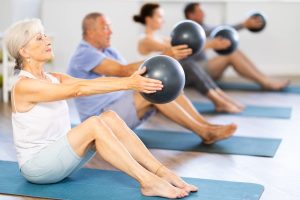While the world becomes more and more obsessed with high-intensity workouts, a gentle yet highly effective approach to fitness is gaining popularity. Known as Japanese walking, this structured method is a simple, science-backed way to improve cardiovascular health, build strength, and support mental wellbeing.
Unlike traditional walking routines that emphasise distance or step count, Japanese walking, also technically referred to as interval walking training (IWT), is based on alternating periods of brisk walking with periods of slow recovery walking. Originating from Japan and developed by Dr. Hiroshi Nose at the Shinshu University Graduate School of Medicine, this method was specifically studied among people aged 40 to 75. Its results have reportedly impressed researchers and public health experts alike.
What is Japanese walking?
Japanese walking is a timed method of walking that alternates between three minutes of fast-paced walking and three minutes of slower walking, typically over a 30-minute session. The brisk walking phase should be vigorous enough to raise your heart rate to around 70-85 percent of your maximum. During this phase, you should feel slightly breathless, able to speak a few words, but not hold a conversation. Then comes the slow-paced interval, giving your body a chance to recover.
The cycle is repeated five times to complete the full session, and ideally performed four times per week to gain the full benefits. Unlike continuous walking, which maintains a steady pace, the interval structure of Japanese walking is key to its effectiveness. It creates periods of physical challenge followed by rest, which helps the body adapt and grow stronger.
Why it works
One of the most appealing aspects of Japanese walking is that it has significant health benefits without putting unnecessary strain on joints, muscles, or the cardiovascular system. As we age, finding a form of exercise that is both safe and effective becomes more and more important, and this method ticks both boxes.
Cardiovascular fitness
Studies show that Japanese walking improves aerobic capacity, which is a major predictor of longevity and heart health. Even adults in their seventies showed marked improvements after regular training using this method.
Improved strength and balance
The brisk intervals help build leg strength, boost muscular endurance, and improve balance. These are key for preventing falls, one of the leading causes of injury and loss of independence among older people.
Weight control and fat loss
Due to its interval nature, Japanese walking increases calorie burn and stimulates the metabolism more effectively than steady walking. Over time, this can support a healthier weight and body composition.
Mental clarity and mood elevation
The rhythm of the intervals, paired with fresh air and gentle movement, makes Japanese walking an effective way to reduce anxiety and lift mood.
How it compares to the 10,000 steps myth
Many people still cling to the idea that 10,000 steps a day is the magic number for health. But that figure actually originated from a Japanese marketing campaign in the 1960s. Modern science suggests that walking quality, not just quantity, matters more.
A recent Japanese study found that participants who engaged in interval walking saw greater health benefits than those who simply walked continuously for the same amount of time. So while total daily movement remains important, integrating intentional bursts of intensity makes a real difference.
How to get started
If you are new to structured walking or haven’t exercised in a while, it’s best to ease into this method gradually. Begin with short sessions, perhaps 20 minutes, and build your way up to the full 30-minute routine.
Use the “talk test” as a guide. During the brisk phase, you should be able to talk, but not sing or hold a full conversation. In the slower phase, you should feel comfortable and relaxed, allowing your body to recover.
No special gear is needed beyond comfortable walking shoes and suitable clothing. Choose flat, safe routes like walking tracks, parks, or quiet suburban streets. A timer or walking app can help you track your intervals until the rhythm becomes second nature.
As always, check in with your GP before beginning any new exercise programme if you are unsure, especially if you have a history of heart issues, joint problems, or are currently managing a health condition.
Walking towards longevity
Incorporating Japanese walking into your weekly routine could become one of the most sustainable and enjoyable health investments you’ll have made in recent years. Beyond the physical benefits, this method also promotes discipline, mindfulness and routine, qualities that massively contribute to overall wellbeing in retirement.
So the next time you’re out for a stroll, consider giving this walking method a try. With its roots in scientific research and showing results of greater strength, balance, and longevity, Japanese walking may be the perfect step forward.




